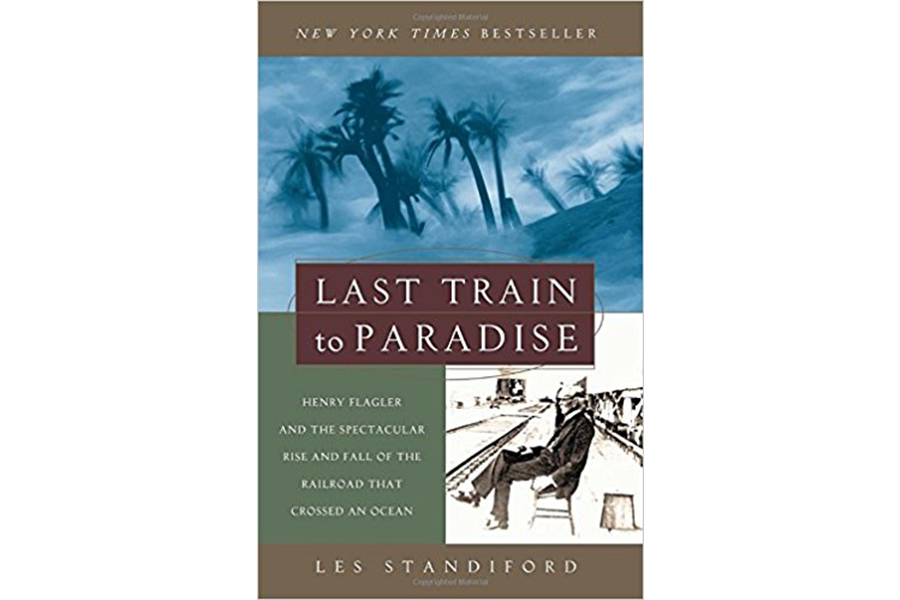Hurricane hubris and heroism: Inside 1935's devastating Key West storm
Loading...
When Labor Day 1935 rolled around, Ernest Hemingway was dealing with a spot of bother.
He'd been barraged by lookie-loo fans who'd found his Key West address in a tourism booklet, and the city had only reluctantly allowed him to build a stone privacy fence. It was finally up, and he could take an afternoon break after working on what would become the novel "To Have and Have Not."
Then he spotted the banner headline in the evening paper: "STORM WARNING!" He scrambled to protect his cats, his house, his beloved fishing boat. Especially the boat.
And then Hemingway – and others – went on to perform heroic acts during the Great Labor Day Hurricane of 1935, says author Les Standiford.
One of only two pre-Irma storms classified as Category 5 to hit Florida in its history, the Great Labor Day Hurricane of 1935 produced what is still the lowest barometric pressure reading in US history.
Heroes include a brave train engineer who desperately hustled evacuees out of the hurricane's path and an immigrant from the Bahamas who tried to save his fishing-and-farming clan of more than 60 people.
But heroism weren't enough. The unnamed hurricane – names didn't appear until the 1950s – killed more than 400, including hundreds of unprotected veterans working on a road project. Their needless deaths spawned a national scandal.
The storm also destroyed a remarkable cross-island railroad considered the "Eighth Wonder of the World" and inspired the classic 1948 Bogart/Bacall movie "Key Largo."
Standiford, a novelist and historian, chronicled the storm in his 2002 book Last Train to Paradise: Henry Flagler and the Spectacular Rise and Fall of the Railroad that Crossed an Ocean. Standiford took a break from putting up hurricane shutters at his Miami home to talk about the rise of Key West, the deadly failure to save the vets, and the camaraderie of catastrophe.
Q: How did the Florida Keys become so significant?
Key West originally was a military post, the staging area for patrolling the Caribbean.
It became very important for fishing, sponge-diving, shrimping, turtling, and cigar-making. It was also the most Southern city in the US and had a tropical atmosphere, which gave it an exotic lure. Key West was the most populous city in Florida until the 20th century, and the most important city in Florida well into century.
Q: How did people get warnings about hurricanes in 1935?
The warning system came from the sea. A ship would sail through a hurricane in the Atlantic Ocean and telegraph that "there's a big storm out here."
People would triangulate how big it was and how bad it was.This storm went south of Cuba and into the Gulf of Mexico, and they figured it would smack into Mexico and dissipate after after a while. But they did not fully understand the extent of high-pressure systems advancing from the west to the east and their influence on hurricanes.
In 1935, one of those high-pressure systems hit the hurricane, struck it, and it reversed course, almost doubling back on itself. Everybody thought: Here it comes, Key West will get nailed. It struck land in the middle and upper Keys.
Q: What happened when it hit?
The storm surge was about 20 feet, and there's no higher land than about 9 feet.
The middle Keys were completely covered with water. This wasn't a flood. It was a tidal wave. Most structures collapsed and washed away. The rescue train [of vets who'd lived in tents while working on a road] tried to get people out but toppled on its side. The only thing that didn't get washed over was the locomotive engine, which weighed 400 tons.
It was a catastrophe. The train station in Marathon turned into matchsticks. A few people who tied themselves to trees survived.
Q: How did the government manage to leave veterans defenseless, living only in tents during hurricane season?
They sent them down there to give them some work during the Depression and some livelihood. Their intentions were good.
But you can't just put 700 guys in tents during hurricane season and hope for the best. It would be inconceivable now to put government employees through such a risky situation today.
There was an inquiry, but no one ever faced charges.
Q: What can we learn from this disaster?
We think we're powerful and mighty, and along comes something like the Labor Day Hurricane of 1935 or Irma of 2017.
It's a reminder that life is not only difficult and precarious, but given all our abilities and our capabilities, all our progress, here we are still cowering and hunkering down.
As human beings, this is a lesson that we have have difficulty comprehending because it's not our nature. It's a humbling experience.
Q: What are some reasons to be hopeful?
A storm like this brings people together in the face of a common enemy. That's one heartening thing.
If you go to the Keys today, people call themselves the Conch Republic. There is a kind of camaraderie that grows in a place like that where they are threatened by forces like hurricanes.







